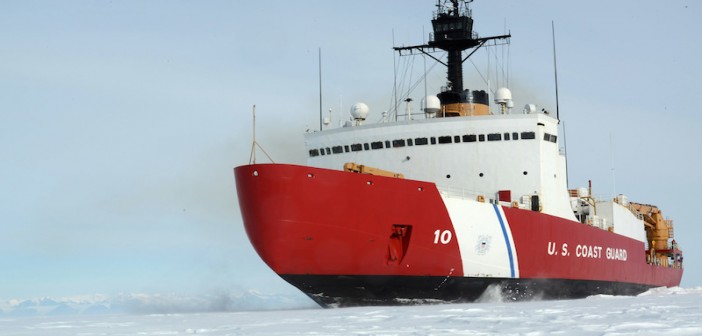The Navy and Coast Guard integrated program office issued another request for proposal for a new class of heavy icebreakers. The RFP seeks shipbuilding industry input and comments toward a first prototype to be built, with an option for two follow-on ships.
The new icebreakers would replace the 40-year-old Polar Star, the Coast Guard’s sole operation heavy icebreaker, starting by the mid-2020s.
Last February the Coast Guard let $20 million in fixed-price contracts to U.S. shipyards for preliminary design studies. The contracts were awarded to Bollinger Shipyards LLC, Fincantieri Marine Group LLC, General Dynamics/National Steel and Shipbuilding Co., Huntington Ingalls Inc., and VT Halter Marine Inc. A final RFP is expected in fiscal year 2018, with expectations for a contract award in fiscal 2019.
Through the debate and discussion of icebreaker needs, there has been a growing tone of urgency.
According to a notice from Naval Sea Systems Command, the purpose of the request is to gather comments on the prospect of a building contract that “motivates early delivery or otherwise reduces schedule risk” — an incentive recommended by the Government Accountability Office and other experts advising the Coast Guard and Navy.
Similarly, planners are seeking out industry's thoughts about possibly including other incentive “that motivates investments that have the opportunity to reduce technical, cost, and schedule risk to the program.”
GAO officials in particular have stressed the need for a construction program that stays on track and schedule. The Polar Star is already reliant on spare parts from its laid up sister ship, the Polar Sea. A major engine casualty or other breakdown would leave the U.S. with just a single operational icebreaker, the 420’ medium-duty Healy.
In a July report to Congress and the Coast Guard, experts assembled by the National Academies of Science, Engineering and Medicine recommended a block buy program of four icebreakers, approximately the same size as the 399’ Polar Star, to bring the average cost per ship to around $791 million.
With a construction start in the second half of 2019, the first new ship could be commissioned in mid-2024, and the second during 2025.





